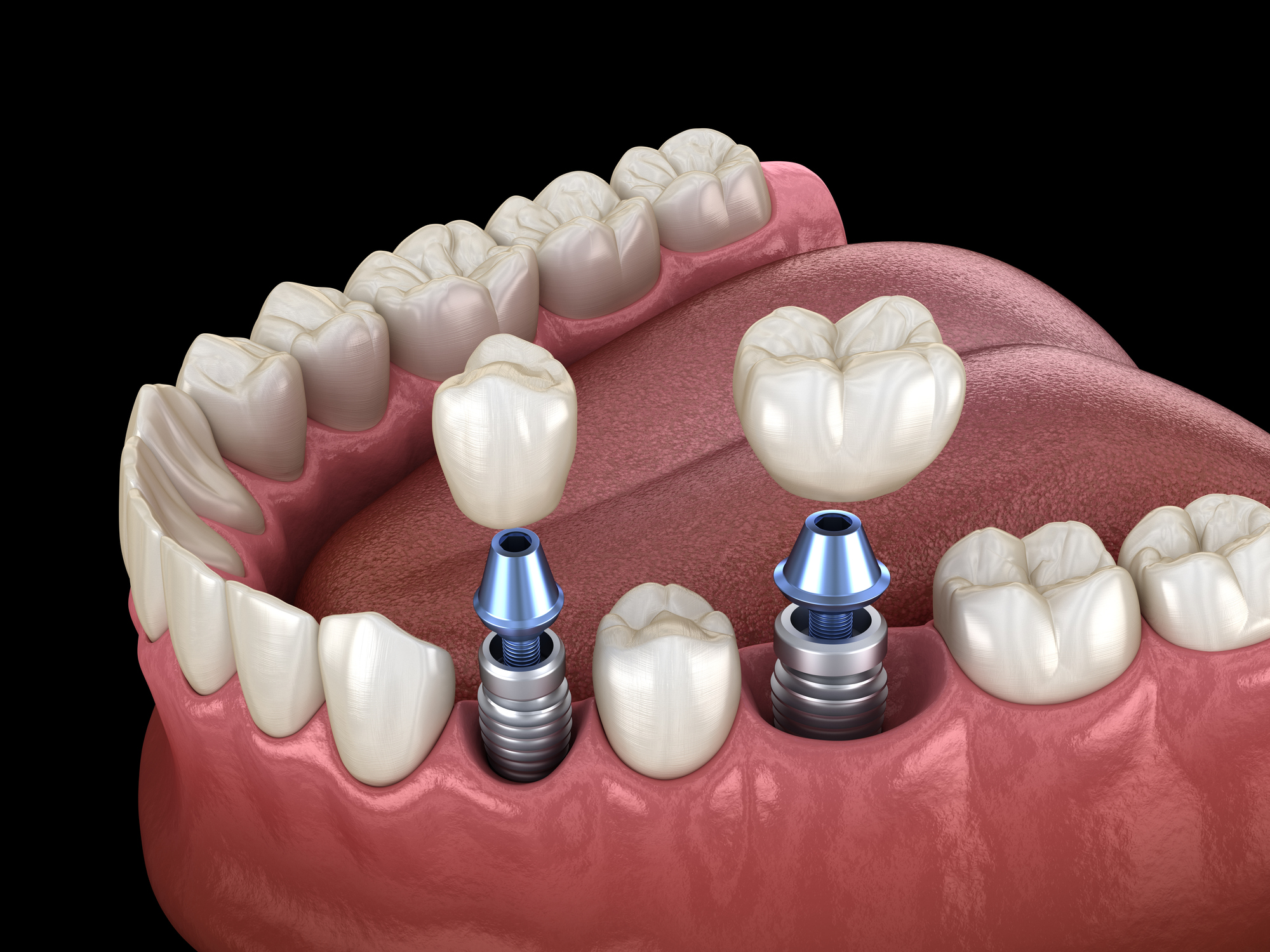The smart Trick of Dental Sense That Nobody is Talking About
Table of ContentsHow Dental Sense can Save You Time, Stress, and Money.Dental Sense - The FactsSome Known Details About Dental Sense The Definitive Guide for Dental Sense
are medical gadgets operatively dental implanted right into the jaw to recover an individual's capacity to chew or their appearance. They supply assistance for synthetic (fake) teeth, such as crowns, bridges, or dentures. When a tooth is shed because of injury or disease, an individual can experience complications such as rapid bone loss, faulty speech, or changes to eating patterns that result in pain.Dental dental implant systems contain a dental implant body and oral implant joint and might also consist of an abutment addiction screw. Front tooth filling. The oral implant body is surgically placed in the jawbone in location of the tooth's root. The oral implant joint is usually affixed to the dental implant body by the abutment fixation screw and expands via gums right into the mouth to support the connected synthetic teeth
(https://experiment.com/users/dentalsense1)Structure of The Dental Implant System picking oral implants, talk to your dental company concerning the possible advantages and risks, and whether you are a candidate for the treatment. Things to take into consideration: Your overall health is an important consider determining whether you are an excellent candidate for oral implants, how much time it will certainly take to heal, and how much time the implant might stay in area.
Cigarette smoking might affect the healing process and reduce the long-term success of the dental implant. The healing process for the implant body might take a number of months or longer, during which time you normally have a temporary joint instead of the tooth. the oral implant treatment: Meticulously comply with the oral hygiene instructions provided to you by your oral copyright.
The Greatest Guide To Dental Sense
Implant failure can lead to the need for another surgical treatment to take care of or change the implant system. Brings back the capacity to chew Brings back cosmetic appearance Helps maintain the jawbone from reducing because of bone loss Preserves the health and wellness of the surrounding bone and periodontals Aids keep adjacent (close-by) teeth stable Boosts lifestyle Damages to surrounding all-natural teeth during implant placement Injury to the surrounding tissues during surgery, such as sinus perforation Injury throughout surgery (as an example, crack of surrounding jawbone) Insufficient feature, such as seeming like the teeth do not bite together generally An experience that the tooth is loosened or turning in location resulting from a joint screw loosening Implant body failure (looseness of the dental implant body) as a result of systemic infection, which might be more likely in people with uncontrolled diabetes due to local infection in bone and periodontals supporting the implant body because of delayed recovery, which may be extra most likely in people that smoke Difficulty cleansing the gum tissues around the dental implant, resulting in inadequate oral hygiene Neglected periodontal illness Post-surgical feeling numb as a result of nerve impingement or damages Constantly notify health and wellness treatment suppliers and imaging technicians that you have oral implants before any magnetic vibration imaging (MRI) or x-ray treatments.
FDA is not familiar with any negative events reported for MRI or x-ray procedures with oral implants. Oral implants systems are generally made from materials that comply with worldwide agreement criteria of the International Company for Standardization (ISO) or ASTM International. These criteria have details of what makes a risk-free material.

An oral implant is a structure that replaces a missing out on tooth. With screw-like gadgets, the surgeon inserts an implant right into the jawbone, and it works as a support for a man-made tooth, called a crown. A device called an abutment connects the artificial tooth to the oral implant. The crown is personalized to fit the person's mouth and match the color of their teeth.
Rumored Buzz on Dental Sense
Some people are not eligible for dental implant surgical procedure. It is for dental specialists to operate on people with: intense illnessuncontrollable metabolic diseasebone or soft tissue illness or infectionIf these issues are settled, a person can have the surgery. In, dental doctors avoid running on people with: If individuals with any one of the above undertake oral implant surgical procedure, there is a greater risk of the implant falling short.

Oral dental implant surgical treatment is a tailored procedure. It's not the exact same for everybody. Yet the following gives a general review of what you can expect your dental practitioner, oral surgeon, periodontist or prosthodontist to do: Position the dental implant operatively. Provide you time to heal. Connect the blog post and final crown, bridge or denture.
Next, your doctor will very carefully position the oral implant right into your jaw. If your dental implant is near the front of your mouth, your dentist will certainly make a momentary tooth for you to use up until you recover.
Unknown Facts About Dental Sense
Your provider can tell you what to anticipate in your scenario. During the healing phase, your jawbone needs to fuse to the oral implant. This procedure, called osseointegration, is essential for security and lasting success. This process can take anywhere from 3 to nine months. In some situations, it might take longer.
As soon as your implant heals, your dental expert can affix the joint (tiny adapter article) and your last reconstruction (crown, bridge or denture). This typically takes about one hour to complete and might need a second minor surgical procedure. You should not feel any type of discomfort during your oral implant treatment since your copyright will utilize medication to numb try this your periodontals.